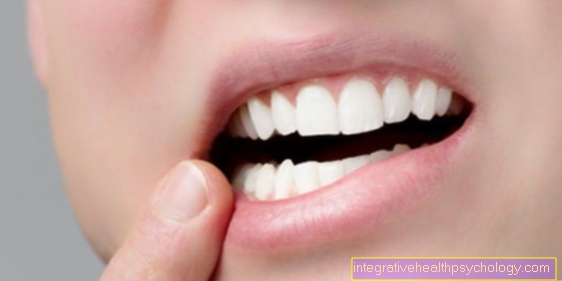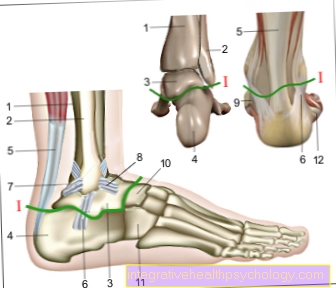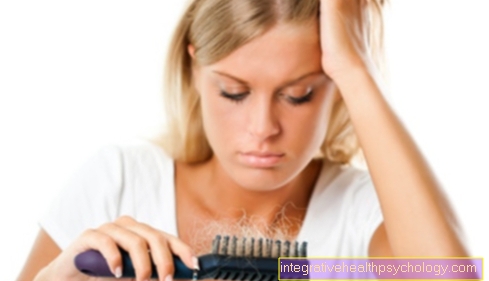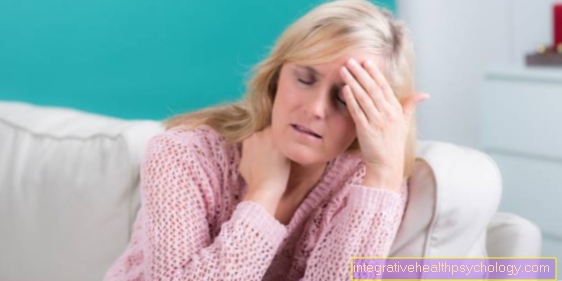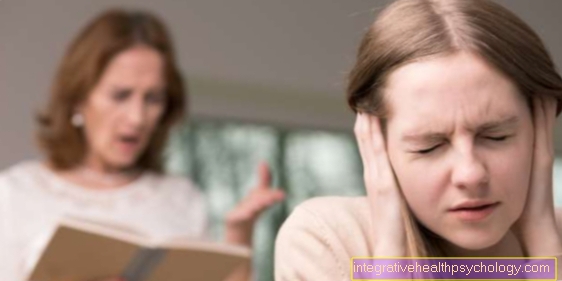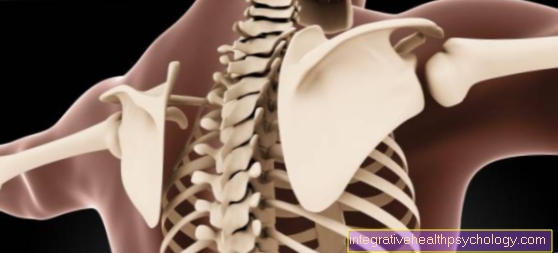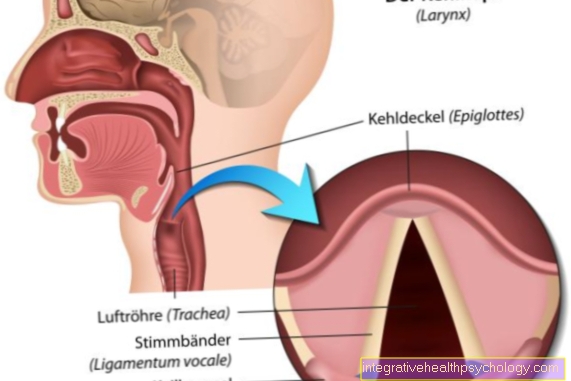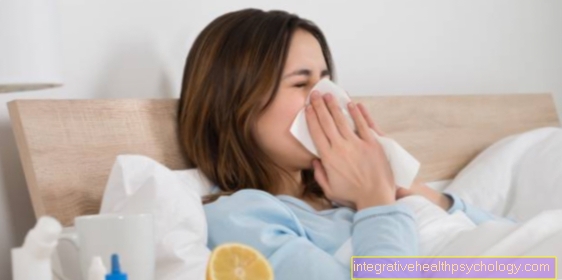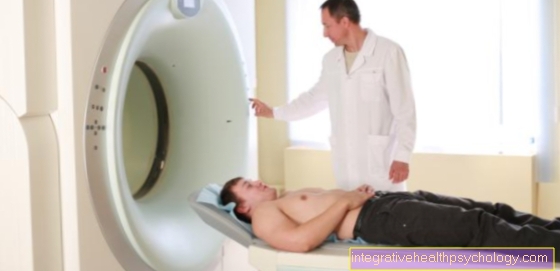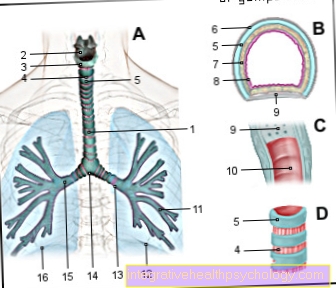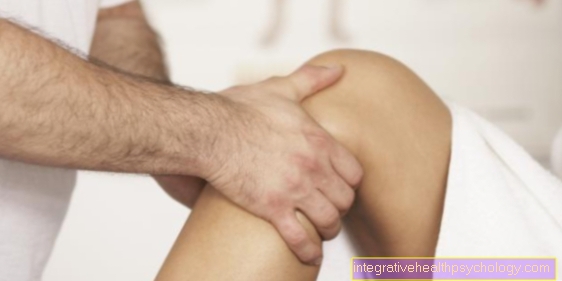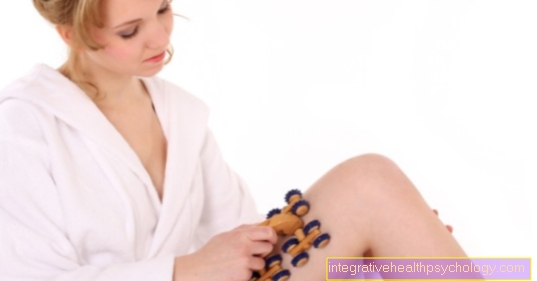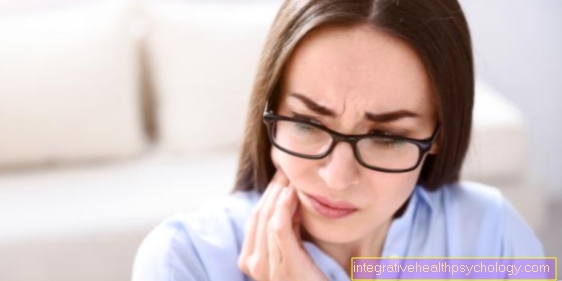Hair loss in women
definition
Hair loss is a condition in which the hair loss is increased beyond the natural level.
People lose around 100 hairs a day, but they grow back. In the event of hair loss, this hair does not grow back, so that hairlessness (alopecia) can develop.
From a loss of around 200 hairs a day, one speaks of hair loss. Hair loss is also known as "effluvium" in technical terms.
The terms effluvium and alopecia are often confused. However, alopecia describes the condition of hairlessness, not the process of hair loss. Hair loss does not necessarily have to lead to alopecia. It can be temporary or permanent. Hair loss and hairlessness affect not only men, but women too.
In some women, especially after the menopause, there is an increased loss of hair.

Causes of hair loss in women
The causes of hair loss in women are very diverse. Some of these are temporary in nature, but others result in permanent hair loss.
Lean nutrition
Malnutrition can lead to hair loss due to the lack of important vitamins and trace elements such as iron. Iron deficiency is common among women due to increased menstrual bleeding.
Medication
In addition, various drugs, especially chemotherapy drugs, can lead to hair loss. However, beta blockers, heparins, ASA or anesthetic gases are also possible causes.
allergy
Allergic reactions, hair coloring or aggressive oxidizing agents, which are mainly contained in bleaching, are still potential triggers of hair loss in women.
Chronic diseases
Chronic diseases such as diabetes mellitus, a chronic infection or malignant cancer are also important causes of hair loss.
Viruses and fungi
Furthermore, virus and fungal diseases of the skin, skin tumors, eczema or psoriasis are possible causes.
Read more on the topic: Causes of hair loss
The role of hormones in hair loss in women
The subject of "hormones" often plays a major role in hair loss. It is not uncommon for hormonal causes to be responsible for reduced hair density. In women in particular, the hormonal balance is an important factor in the development of hair loss.
A disorder of the thyroid function and thus a disruption in the metabolism of the thyroid hormones can be associated with reduced hair density and a changed hair structure.
The detection of a disturbed thyroid function is carried out by measuring the thyroid values in the blood. Additional accompanying symptoms such as heat intolerance, sleep disorders, nervousness and digestive disorders are possible.
Read more about hair loss with thyroid dysfunction at: Hair loss from a thyroid disorder
The therapy of hair loss in women
When treating hair loss, one should be aware of the following: A diagnosis or cause of the hair loss should be known prior to any therapy.
There are many "remedies" that claim to be able to end hair loss. However, caution should be exercised when buying such products, especially online. They are ineffective and can even be harmful.
Let yourself be examined by a dermatologist and discuss how to proceed with them. There is no general therapy, as hair loss can have very different causes.
If there is a lack of vitamins or iron, a change in diet or the use of supplements are usually sufficient.
Oral antiandrogens such as cyproterone acetate or estrogens, which are applied locally to the scalp, can be used for androgenetic hair loss in women. The active ingredient minoxidil, which is contained in the well-known product "Regaine", can also be used in women. The product is applied to the scalp in the form of a foam or spray 2 times a day. An effect can be seen after about 12 months. However, if the intake is interrupted, hair loss can recur after 3 to 4 months.
In the case of circular hair loss in women, various therapy options are possible. Steroids are used in both local and oral form. Another option is immunotherapy with DCP (diphenylcycloprenone), which can only be carried out by specialized centers.
Ultimately, hair transplantation is also available for treating androgenetic hair loss.
Read more on the topic: Hair loss therapy
Diagnosing hair loss in women
If you feel like you are suffering from hair loss, you should contact one Dermatologist turn. He is the specialist for the skin and its appendages, which include hair and nails.
The dermatologist takes a close look at hair, skin and nails to narrow down possible causes and to determine the type of hair loss. Skin changes, for example, leave them on Fungal diseases or Tumors conclude.
The clinical Epilation test, in which the doctor plucks a hair, shows whether the hair can be pulled out without pain and without force.
Examination of the hairy skin with a Magnifying glass shows whether there is still Hair follicles let find. The entire Hair pattern of the skin is checked and assessed. The doctor asks important questions in advance about accompanying symptoms, duration and type of hair loss, illnesses and medication intake.
For women there are especially questions about Hormonal balance, how Menopausal symptoms, Duration and nature of menstruation or the Taking hormonal drugs of interest.
A Hair root analysis (Trichogram) can help to narrow down the causes and the type of hair loss. In some cases is a Sampling the scalp (biopsy) necessary for more detailed diagnosis.
Ultimately, using a Blood test Iron, thyroid or inflammation values as well as autoimmune processes can be determined.
Symptoms of hair loss in women
Apart from the increased loss of hair, hair loss can occur symptom-free expire. The increased loss is usually noticeable when showering or brushing out the hair.
However, accompanying symptoms may occur depending on the cause.
The hair loss pattern can be very pronounced, as it is for example in a androgenetic hair loss the case is. A reinforced one is typical Hair thinning in the crown and forehead areaH.
A diffuse hair loss usually rather expresses itself through overall thinner hair. Bald spots are rare.
A circular hair loss is characterized by a sudden onset and one sharply demarcated loss with bald spots out. The occurrence of so-called "Exclamation point hair". This is short hair that grows back on the edges of the bald spots and has the shape of an exclamation point. Furthermore are Changes to the nails to watch who one as Pit or dimple nails designated.
Apart from the pattern of hair loss and its severity, accompanying symptoms are possible that result from a causal disease. These include, for example Itching, painful areas of skin or Skin changes in general. As part of a Iron deficiency it can lead to fatigue and paleness. Disorders of the hormonal balance show a wide variety of accompanying symptoms. However, these have nothing directly to do with hair loss.
You might also be interested in: Symptoms of iron deficiency
The age at hair loss
Hair loss in women aged 20 and over
Young women can also suffer from hair loss. Often times this is temporary and not a cause for concern.
Stress, deficiency symptoms or hormonal fluctuations can be causes of hair loss. It usually helps to analyze your everyday behavior and to reduce tension and stress. Deficiency symptoms, such as a vitamin or a slight iron deficiency, can also be treated well through nutritional measures or the use of substitute preparations.
Hormonal fluctuations are possible in the course of taking pills, pregnancy or a metabolic disease. The best thing to do is to seek advice from your general practitioner or gynecologist.
Thyroid disorders are not uncommon in young women and often have an impact on hair density.
Taking medication can also be a possible cause.
Circular hair loss can still be the result of autoimmune, inflammatory processes. Young women are particularly affected. However, such hair loss persists in only 20%. In most cases it heals well.
Read more on the subject at: Hair loss caused by the thyroid gland
Hair loss in women aged 40 and over
Hair loss in women over 40 can have many different causes.
Hormonal fluctuations, stress, deficiency symptoms or the use of certain medications are common causes of temporary hair loss.
Thyroid dysfunction should also be considered in the case of reduced hair density, dry or brittle hair.
Androgenetic hair loss, which accounts for around 95% of the causes of female hair loss, usually only occurs during the menopause.
However, women in the premenopausal phase can also be affected. This is just before menopause and begins in the woman's 40s. The cause of hair loss is an increased sensitivity of the hair follicles to androgens. Antiandrogens such as cyproterone acetate or local estrogens are used therapeutically.
Circular hair loss can have various causes, such as skin diseases, fungal infections or burns to the skin.
In women there is a special form of scarring, circular hair loss known as Brocq pseudo-loading referred to as. This disease mainly affects women between the ages of 30 and 55. The cause of the hair loss in the Brocq pseudo-load is not known.
Hair loss in menopausal women
During the menopause there are hormonal changes in women. Menopause begins before the last menstrual bleeding. The first irregular menstrual cycles appear around the age of 40.
Dizziness, headaches and sweats are not uncommon during this phase.
Androgenetic hair loss can occur in the post-menopausal period. This hair loss is caused by the excess of androgen, male hormone, in this phase of life. Gradually, estrogen and progesterone levels decrease during menopause, and the androgen predominates.
Hair follicles can react with increased sensitivity to these androgens, so that the hair falls out. This type of hair loss in women is divided into 3 degrees:
- Grade 1: Light hair in the forehead area
- Grade 2: clearing in the area of the temple
- Grade 3: more extensive clearing in the area of the forehead, temples and surrounding skin.
However, baldness does not occur. For many women, hair loss is an enormous psychological burden.
Antiandrogens, such as cyproterone acetate, in the form of tablets or local estrogens that are applied to the scalp are used therapeutically. In addition, the active ingredient minoxidil, which is contained in the over-the-counter product “Regaine”, is approved for the treatment of women.
Read more on the topic: Homeopathy for hair loss in menopausal women
Hair loss on the back of the head in women
Women only suffer in that rarest cases from hair loss on the back of the head. In the 95% the existing form of hair loss, namely the androgenetic hair loss, only affects the forehead, the Apex as well as the Temporal area. However, the back of the head is left out.
However, hair loss on the back of the head can occur other causes to have. These include skin conditions such as Viral or fungal infections, autoimmune processes and inflammatory processes or allergic reaction.
Since many women bleach or dye their hair, reactions should be chemical colorants and lightening oxidizing agents not to be underestimated. They can lead to hair loss if not used properly or simply not tolerated.

